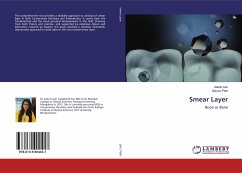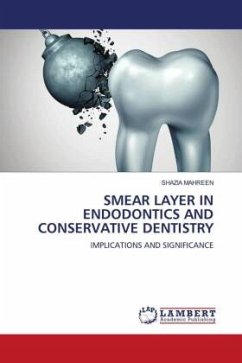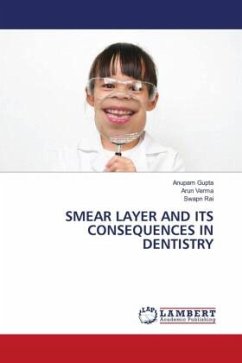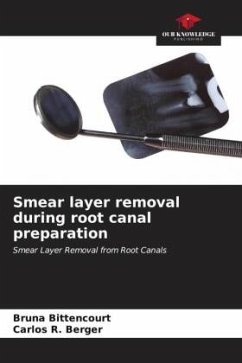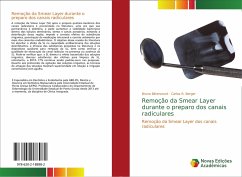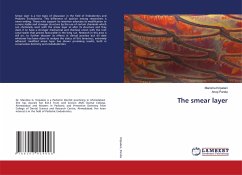
Smear Layer
Versandkostenfrei!
Versandfertig in 6-10 Tagen
53,99 €
inkl. MwSt.

PAYBACK Punkte
27 °P sammeln!
Whenever dentine is cut using hand or rotary instruments, the mineralized tissues are not shredded or cleaved but shattered to produce considerable quantities of debris. The smear layer in a cavity and in the root canal may not be directly comparable. Not only are the tools for dentine preparation different in coronal cavities, but in the root canal the dentinal tubule numbers show greater variation and there are likely to be more soft tissue remnants present. Mechanical and chemical cleaning of the root canal is the main apprehension of the endodontic treatment. It also contains smear layer w...
Whenever dentine is cut using hand or rotary instruments, the mineralized tissues are not shredded or cleaved but shattered to produce considerable quantities of debris. The smear layer in a cavity and in the root canal may not be directly comparable. Not only are the tools for dentine preparation different in coronal cavities, but in the root canal the dentinal tubule numbers show greater variation and there are likely to be more soft tissue remnants present. Mechanical and chemical cleaning of the root canal is the main apprehension of the endodontic treatment. It also contains smear layer which is an irregular surface layer. It is amorphous and it covers the root canal walls. This is due to instrumentation of canal walls. Mechanical instrumentation and meticulous irrigation with disinfectants is necessary for proper disinfection of the root canal. Current methods of smear removal include chemical, ultrasonic and laser techniques - none of which are totally effective throughoutthe length of all canals or are universally accepted.




